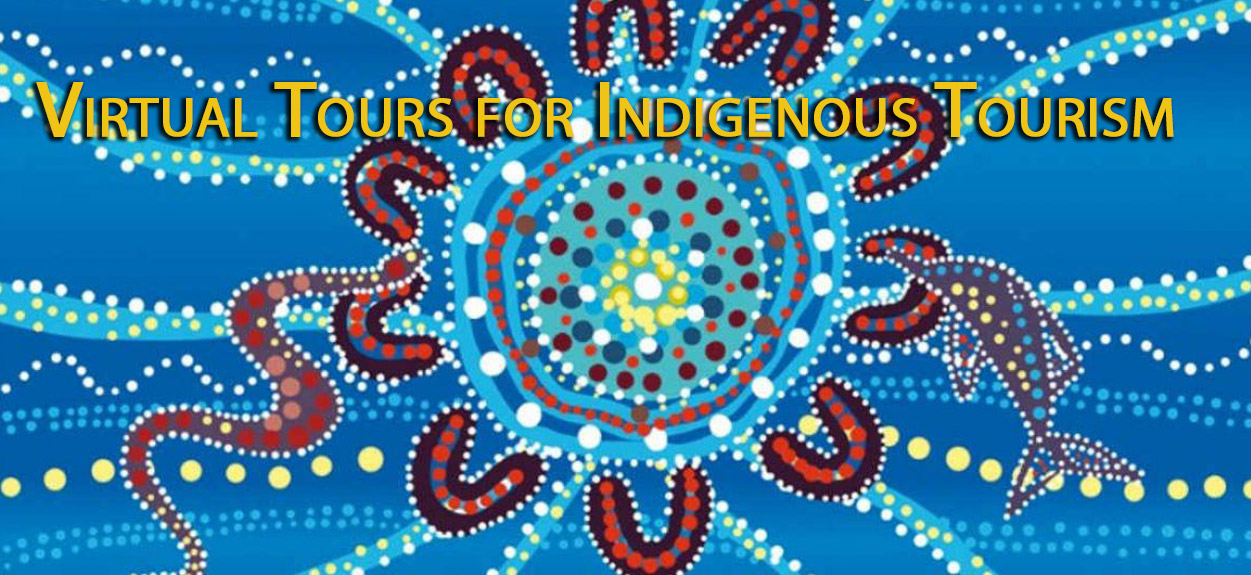Indigenous Tourism has received a lot of media coverage in the last few months – and 2020 promises to be a bumper year for opportunities to showcase Australia’s Indigenous cultural experiences to the average Australian tourist… and to the world !!!
Tourism activities and experiences based around Australia’s rich indigenous culture have been highlighted in recent times, and QLDs Premier – Annastacia Palaszczuk – has declared 2020 the Year of Indigenous Tourism.
Famously, 2019 saw the closure of the Uluru climb, and Queensland Events and Tourism in partnership with local indigenous community groups are investing heavily in Indigenous Tourism and Experiences throughout Queensland.
Benefits of Virtual Tours for Indigenous Tourism
Virtual Tours and Virtual Tourism offer some unique benefits for Indigenous Tourism… Remote and Culturally sensitive tourist destinations which may otherwise be difficult or even impossible to access can be showcased with Virtual Tours and offer potential visitors and tourists a taste of what is on offer… (and encourage them to come and visit)
Some of the benefits offered by a Virtual Tour are outlined below :

Indigenous Tourist destinations which are remote or difficult to access can still be showcased via a Virtual Tour.

Locations which are culturally sensitive (such as Uluru) can still be experienced in a more controlled way via a Virtual Tour – without the risk of damage or interference to the area.
- Offer a “taste” of the experience and provide insights into what is on offer, which very often results in a “I want to see more” moment.
- Extendable – can very easily be updated, modified and improved to update or add extra activities and experiences
- Innovation – Offer a very impressive “wow” factor – particular when coupled with aerial imagery
- Connectivity & Accessibility – Provide a spatial awareness which is not possible with most other forms of marketing. Virtual Tours can be used by anyone with internet access via a variety of devices (mobile, desktop, VR Headset)…
- Experiential & Interactive – Offer an “experience” based interface, where users get to Interact and actually participate. This provides a level of emotional attachment not available through traditional media (photos and video)
- Recycle – Virtual Tours are able to incorporate and reference existing content (information, Photos, Video, Stories, Links, Audio, etc…) .
Indigenous Virtual Tourism Opportunities
There are many Indigenous Tourism Experiences in QLD and throughout Australia which could benefit from the use of Virtual Tours. Here are some examples of well known Indigenous Experiences along with some suggestions as to how they could be enhanced through Virtual Tours :

- Uluru-Kata Tjuta National Park – The climb to the top of Uluru was permanently closed in October 2019 – and Local tourism operators are finding new ways to show tourists how to enjoy Uluru. There are already some fantastic Virtual Tours in and around Uluru and the National Park, but there are plenty of other ways 360° Photos and Video could be used to showcase the area.
- Uluru Climb Virtual Experience – Even though the Uluru climb itself is no longer available, a Virtual Tour could offer tourists worldwide a real taste of the climb experience.

- Minjerribah (North Stradbroke Island) Indigenous Experiences – The Quandamooka Peoples have lived on Minjerribah (North Stradbroke Island) for at least 25 000 years. The Quandamooka Yoolooburrabee Aboriginal Corporation (QYAC) is actively developing and promoting a wide range of Indigenous Experience and Activities many of which could benefit significantly through virtual tours. Some of the experiences and activities currently available or under development by QYAC include :
- Quandamooka Festival – an annual festival celebrating culture, country and people.
- Yalingbila Tours – Whale watching boat tours – A Virtual Tour like this could showcase the vessel itself and use audio/video to offer a real taste of the experience.
- Recreational Trails – the development, upgrade and improvement of recreational trails (pedestrian & cycle tracks) on Minjerribah. A Virtual Tour like this, based around aerial 360° panoramas could showcase the variety and extent of trails and activities.
- QUAMPI – the Quandamooka Arts, Museum and Performance Institute will become Minjerribah’s cultural centrepiece. It will provide a contemporary tourism experience, and bring together ancient Quandamooka artefacts with contemporary art, music, dance and performance.
- Yalingbila Bibula (Whale on the Hill) – A cultural and educational whale interpretive space. This centre will display the 15-metre skeleton of a whake that washed ashore at Mooloomba in 2011 – one of the few complete whale skeletons on display in Australia.
- Cultural Experiences and Workshops – including Boomerang Throwing, Cultural Dance & Indigenous Food Experiences
- Minjerribah Camping – a wide range of locations and camping experiences (including Cabins, Glamping and even Beach Camping experiences. Virtual Tours could be used to show the natural beauty of different locations and the various facilities and camping options.

- Spirits of the Red Sand – a QLD (Beenleigh) based Aboriginal live theatre experience which offers a cultural awakening that is designed to open your eyes to the history, beauty and vibrancy of the Aboriginal people.

- Jellurgal Aboriginal Cultural Centre – the Gold Coast’s only dedicated Aboriginal cultural centre fully owned and operated by the local Aboriginal community. They offer Guided Tours/Walks and cultural experiences and offer a cultural centre and art gallery (which could be showcased extremely well by a Virtual Tour)
Find Out More…
If you’d like to discuss how we can help you to incorporate 360° Photos, Video or Virtual Tours to help showcase your Indigenous Tourism Destination, please give Andy a call on0403 023 223orContact Us.
Note: VIRTUALIZE is NOT affiliated or associated in any way with Uluru-Kata Tjuta National Park, QYAC, Spirits of the Red Sand or Jellurgal Aboriginal Cultural Centre

